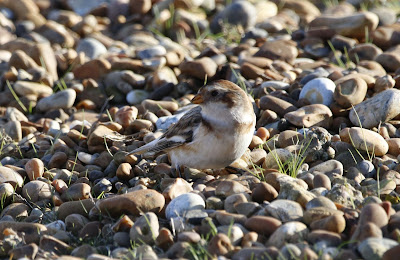Having succeeded in buying the land they then set about rewetting it, creating many scrapes and pools for wetland wildlife. With so much habitat destruction happening in the world, a recreation of wetlands on such a scale is surely something to be extremely positive about.
My visit today was the first since the new reserve was purchased and I was curious to see what has happened to the place. I don't know the area well, I have only been there two times previously, once to see the American bittern (see old posts 24/4/2018).
And despite being less than two years old the new area of the reserve is already a success. The most northerly area, called Peto's Marsh, which is ear marked for a reedbed has had some pools dug, and they were full of birds. Over a thousand LAPWING danced through the air swirling around in large knots in the sky, accompanied by several hundred GOLDEN PLOVER. DUCKS were present, mainly WIGEON, as you would expect on flooded grassland, with smaller numbers of TEAL, SHOVELLER and GADWALL. I counted 15 PINTAIL amongst them, a bird that can be difficult to attract.
Looking across recently purchased land to the new hide
Parts of the reserve are still closed so it wasn't possible to see it all. The bare bones of the visitor's centre look out on the reserve, it was still being built, and there are hides still to be finished. Its an exciting time to be a bird watcher in Suffolk, this new reserve added to the jewels already in this county. Being on the suburbs of Lowestoft, although you wouldn't know it, Carlton is right near to the train station, encourage sustainable transport.
Oulton Marshes
After visiting Carlton Marshes I had a quick look over the river to Oulton Marshes. This place is classed as the same reserve as Carlton, but is more low-key. Its diverse wetland habitats weren't really geared towards birds so much as other wetland wildlife, and despite some flooded areas didn't really attract many birds.
Looking across the scrape to Oulton church
Oulton Marshes is one of those places that if you visited regularly, like as a local patch, you would see a lot, a good place to explore. However its not really the kind of place where if you just played one visit you would see a lot. But its good to see the place anyway, if for no other reason than curiosity.
Exciting times are in store for birders in Suffolk. With such a vast new reserve, who knows what's going to happen, its all so exciting. There are several projects like this happening in the country, but for a local Wildlife Trust to do this is quite amazing, punching with the conservation heavyweights. With places like Carlton Marshes the possibilities are endless. Good times indeed.


































